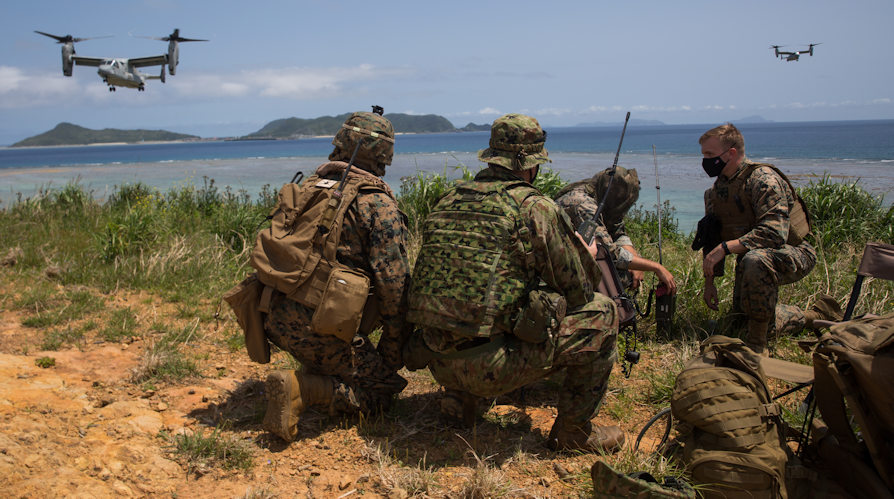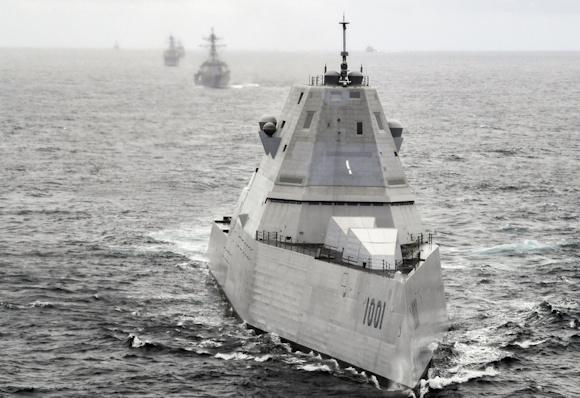The United States is testing a wide variety of weapon systems in the Pacific in the event of a conflict with China.
The US Navy and Marine Corps are testing radically new ways of operating in the Pacific by sending unmanned experimental ships, in the context of highly detailed exercises. The purpose of these exercises would concern the drafting of attack plans aimed at allowing American forces the possibility of "jumping" from one island to the other in a very short time.
Last Monday, the III Pacific Fleet began its first phase off the Californian coast: a class destroyer Zumwalt (photo) coordinated the deployment of a variety of naval units and aircraft unmanned.
The exercises will include the project Super Swarm, planned byNaval Research Office in order to employ swarms of small drones, it will see, among other things, the use of UAV MQ-8B Fire Scout and MQ-9 SeaGuardian launched by a unit Coastline. The two types of drones will be integrated with the units of the US Navy and the Marines.
If these maneuvers are successful, the US Navy will set up a new operational command charged with developing and testing new operational doctrines, by 2022, for a new generation of unmanned surface units.

In turn, the Marines are engaged in their experimentation. Last week they released their provisional manual for Expeditionary Advanced Base (EAB) operations, which will serve as a guideline for developing tactics that will allow them to fight on the islands of the South Pacific.
Marine commander General David Berger said he wanted to see the first EAB elements put into practice by 2023.
Everything the Marines do from the Pacific to the Arctic in the next two years will have this new experiment at the centersaid Lieutenant General Eric Smith, commander of the Combat and Integration Development Department.
Basically, the 180 page document is intended as the first step in an attempt to create a series of small, highly mobile units charged with air defense, anti-ship and submarine warfare, and the occupation and supply of small temporary bases, as part of an island campaign to the other in the South Pacific where units continue to move, while providing a very difficult target for enemy fire to hit.
From the point of view of materials, there is a transformation in the way in which the Marines are equipping themselves, putting in place a range of new systems and proceeding to the rapid development of means that are better suited to future operational scenarios.
By 2030, the predetermined plan indicates that the Marine Corps will have more than 100 long-range unmanned surface ships, framed in the US Navy, which will perform surveillance and attack missions using small, precisely armed and target-guided drones, in able, if necessary, to "roam" on the target before crashing into it.

Photo: US Navy / US Marine Corps












